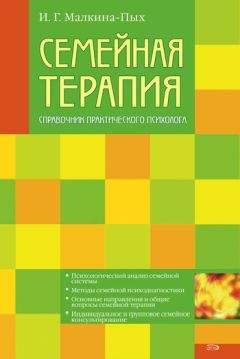Richard Bandler - Using Your Brain —for a CHANGE
Bill: There are a lot of things I don't understand—
Stop. I want you to listen carefully to what I asked you to do, I did not ask you to think of something you don't understand; I asked you to think of something you're confused about. "Confusion" and "not understanding" are very different. There are a lot of things that you don't understand, because you don't know anything about them. You probably don't understand open–heart surgery or how to design a hydrogen bomb. You're not confused about them; you just don't have the information you'd need to understand how to do those things.
Confusion, however, is always an indication that you're on your way to understanding. Confusion presupposes that you have a lot of data, but it's not yet organized in a way that allows you to understand it. So I want you to think of something you're confused about: something you have a lot of experience with, but it doesn't make sense to you. . . .
Bill: OK. I'm thinking about—
Hold on. You're not allowed to tell me the content of what you're thinking about. You only need content if you are nosy. I'm a mathematician; I'm only interested inform. Besides it's too easy for the rest of these people to get lost in the content. I want them to learn the process that I'm demonstrating.
You've thought of something you're confused about. Now I want you to think of something similar that you understand. When I say similar, I mean that if your confusion is about someone's behavior, have your "understanding" also be about someone's behavior. If your confusion has to do with how a car engine works, make understanding be something mechanical, like how your toaster works, for example.
Bill: I've thought of something I understand.
Now you have two internal experiences; we're calling one of them "understanding" and the other one "confusion." Do they both have pictures?
Bill: Yes.
What I'm interested in are the differences between the two. How do they differ? For instance, one might be a movie and the other a slide. Or one might be in black and white and the other in color. I want you to go inside and examine those two experiences, and then tell me how they're different. . . .
Bill: Confusion is a slide, and it's small. Understanding is a movie, and it's large.
Are there any other differences? If the picture of confusion is smaller, it's probably also farther away.
Bill: Yes, it's farther away.
Do either of them have sound?
Bill: Yes, understanding has a voice describing what I see. Confusion is silent.
How do you know that you're confused about one, but you understand the other one?
Bill: I have different feelings when I look at those two pictures,
OK. How do your feelings know to feel that when you look at those pictures.
Bill: I suppose because I taught it that.
I want you all to notice something. I asked a "How?" question, asking about process, and he answered a "Why?" question. "Because" always answers "Why?" All you'll get out of "Because" is a bunch of historical theory. I only have one theory: that the reason people have so much trouble running their brains is because the Earth is tilted on its axis. So actually you have someone else's brain, and it's mad. That's as much theorizing as I do.
Let's try again. Bill, how do you know to have different feelings when you look at those two different pictures? . . .
Bill: I don't know.
I like that answer.
Bill: After I thought about it, I decided I didn't know.
That happens sometimes. Pretend you know. Talk. The worst thing that can happen is that you can be wrong. Years ago I realized I had been wrong so many times, I decided I'd just go ahead and be wrong in the ways that were more interesting.
Bill: When I look at the understanding picture, I can see how things work. That gives me a soft feeling of relaxation. When I look at the other one, I can't see what's going to happen next; I feel a little tense.
Those certainly sound like quite different experiences. Does anyone have any questions about what I've been doing?
Man: You make it look so easy. How do you know what questions to ask?
All I want to know is, "How are these two experiences different?" The answers to that are specific differences in the person's visual, auditory, and feeling experience. My questions are often directed at what the person is not noticing, and they are always directed toward helping that person make distinctions that he wasn't making before. For instance, when I asked Bill if it was a slide or a movie, he could answer easily. But he probably never even noticed that difference before, because no one ever asked him about it.
Woman: Is there any particular order to the questions you ask? You asked about whether it was a slide or a movie before you asked about color or black and white.
There's a certain efficiency in asking about things first and qualities later; you'll go astray less often. If you ask "How fast is it moving?" and it turns out to be a slide, that may be a little confusing to the person you're doing this with. Go for the basics first, and then ask about what other finer distinctions might be
there.
The questions you ask are also a function of familiarity. I've explored confusion and understanding a few times before, so I already know what kinds of differences are likely to be there. It's like anything else you learn to do. When you do it the first time, you stumble around a bit. Later, when you're more familiar with what you're doing, you get more streamlined and systematic. You can also just make a long list of all the possibilities and go through them one by one. But it's easier if you first mention a few of the main distinctions to get that person's mind going in the right direction, and then ask, "How are the two different?"
Now let's go on to the more interesting part. Bill, I want you to take "confusion" and change it until it's the same as "understanding." I don't want you to change the content. I only want you to change the process that you use to represent the same content. First I want you to take that slide and make it into a movie. . . .
Bill: I can't seem to do that.
Do it this way. First make a series of slides at different times. When you have enough of them, look at them in rapid succession. Speed that up a little, and you'll have a movie. A movie is only a sequence of still pictures shown in a fast sequence.
Bill: OK. I've got a movie.
Good. Now add a narrative sound track that describes the movie. . . . (Bill nods.)
Now make that movie larger and closer until it's the same size and distance as your picture of understanding. . . . What happens when you do that? Do you understand it now?
Bill: Yes. I can see what's going on now; I feel much more comfortable. I have the same feeling with both pictures.
It makes sense that if you have a large movie with a narrative sound track, you'll understand something better than if all you have is a small, silent, still picture. You have much more information, and it's organized in a way that you can comprehend it. This is Bill's natural way of learning how to understand something.
Woman: Don't you have to have more information to be unconfused?
Sometimes that's the case. But often the person actually has the information; it just hasn't been accessed in a way that allows understanding. It's not that something is missing; it's just that what you have is poorly organized. You all know much more than you think you do. Usually it's not too little information that creates confusion, it's having too much information. Often a person's confusion is an enormous collage of data, or a lot of pictures flipping in rapid succession. In contrast, most people's pictures of understanding are well–organized, and very economical. They're like an elegant mathematical equation, or a good poem. They distill a lot of data down to a very simple representation. What I did with Bill just made it possible for him to collect the data that he already had, in a way that he could understand it. Being able to use your mind means being able to access, organize and use what you already have.
Most of you have seen what happens when a fire burns down in a fireplace. If you rearrange the logs a little bit, it will blaze up again. You haven't added anything. The only thing you've changed is the arrangement, but it makes a huge difference.
If you think that you need more data, you'll probably ask lots of questions. If the answers just contain raw data, they won't help you much, and you'll have to keep asking. The more answers you have, the less you will examine the questions you are asking. But if the answers help you organize the data you already have, it may help you to understand. That is what's often called "passive learning," someone who's always going, "Spoon–feed me." Other people can take in a large amount of data and organize it themselves without much help from outside. That's what's often called "active learning."
Now, Bill, I want you to try it the other way. Take what you originally understood and make it into a smaller, more distant, still picture and erase the sound track. . . . Bill: Now I'm tense and confused.
So now we could take anything you're sure of, and confuse the hell out of you. You're all laughing; you don't realize how useful that can be! Don't you know someone who is sure they understand something, and they don't? . . . and that false confidence gets them into a lot of trouble? A good dose of confusion could get them motivated to listen to people around them and gather some very useful information. Confusion and understanding are internal experiences. They don't necessarily have anything to do with the outside world. In fact, if you look around, there usually isn't much connection.
In order for Bill to have the experience he calls "understanding," he has to go through a process in which the information he has is represented as a large movie with a sound track. This happens randomly sometimes, and at other times other people may induce it. However, now that he knows how it works, he can deliberately engage that process whenever he is confused about something. If he hasn't got enough data, he may not come to full understanding; his movie may have gaps in it, or the sound track may fade out from time to time. But it will be the best representation for him of what he knows. Those gaps in the movie will indicate precisely where he needs to have more information. And whenever he's bored with what he already understands too well, he can confuse himself as a prelude to coming to some new and different understanding.
Now I want you all to take turns doing what I did with Bill. Pair up with someone you don't know, because that will make it easier.
1. Ask your partner to think of a) something he is confused about, and b) something similar he understands. Your partner is not allowed to tell you anything about the content.
2. Ask,"How are these two experiences different?" You don't care about how they're similar, only how one is different from the other,
3. When you have at least two differences, ask your partner to change confusion to be the same as understanding.
4. Test what you've done by asking if he understands what was previously confusing. If he understands, you're done. If he doesn't understand, back up to step 2) and find some more differences. Keep going until either he understands, or he has identified what specific lack of information is preventing full understanding. Keep in mind that no one ever totally understands anything. That's OK. It keeps life interesting. Take about fifteen minutes each. . . .
Most of you have probably noticed that your partner did something different inside than you do, in regard to the words "understanding" and "confusion." Let's first hear some of the differences you found, and then deal with any questions,
Man: My confusion is like a TV set with the vertical hold out of adjustment. The pictures keep rolling over so fast I can't see them. When I slowed it down and steadied it, it all made sense. But for my partner, confusion was a close panorama. So much was happening so close around her that she couldn't take it all in. She had to slow it down, and then physically back up and see it at a distance to understand it.
Man: My partner is a scientist. When he's confused, he just sees movies of things happening — what he calls "raw data." When he starts to understand, he sees little diagrams superimposed on the movies. These diagrams help him condense the events, and the movies get shorter and shorter until he gets what he calls a "moving still picture." It's a still picture with a superimposed diagram that indicates all the different ways that still picture can turn into a movie. That still picture sort of wiggles a little bit. It's very economical.
That's a great one. Do these make sense to the rest of you? We've got quite a variety already.
Woman: When I really understand something, I have five different clear pictures all at once, like a split–screen TV. When I'm confused I only have one picture, and it's fuzzy. But when my partner understands something it's always over here on her right side. Things she's confused about are in the center, and something she doesn't know anything about arc over on her left.
Alan: What my partner did seemed very unusual to me. Her confusion was very focused and specific, and her understanding was a fuzzy, bright, movie that was out of focus. When she fuzzed up the confusion, she felt like she understood. I said to her, "Turn the knob, adjust the lens to get it out of focus."
You can do it that way, but you don't have to be metaphorical. People don't actually have knobs; you can just tell them to do it. So when she fuzzed it up, she understood. I hope she's not a heart surgeon! That's one of the strangest ones I've ever heard. If you blur the image, then you understand it! It certainly is different from the other ones we've gotten here. Did that seem odd to her, too?
Alan: Yes, it did, Could that be like turning it over to some lower–level unconscious process that you trust?
No, I don't accept explanations like that. All these processes are unconscious until you ask someone about them. There are many things we do intuitively, but this is different. Of course, you may have missed something important. But assuming that your description is correct, her understanding can't be connected with doing anything. In order to do something you have to have some specific detail. That's why I made that crack about hoping she wasn't a heart surgeon. With her kind of understanding, her patients wouldn't have a very high survival rate.
However, a fuzzy, bright understanding will be good for some things. For example, this is probably someone who would be lots of fun at a party. She'll be a very responsive person, because all she needs to do to feel like she understands what someone says is to fuzz up her pictures. It doesn't take a lot of information to be able to make a bright, fuzzy movie. She can do that really quickly, and then have a lot of feelings watching that bright movie.




